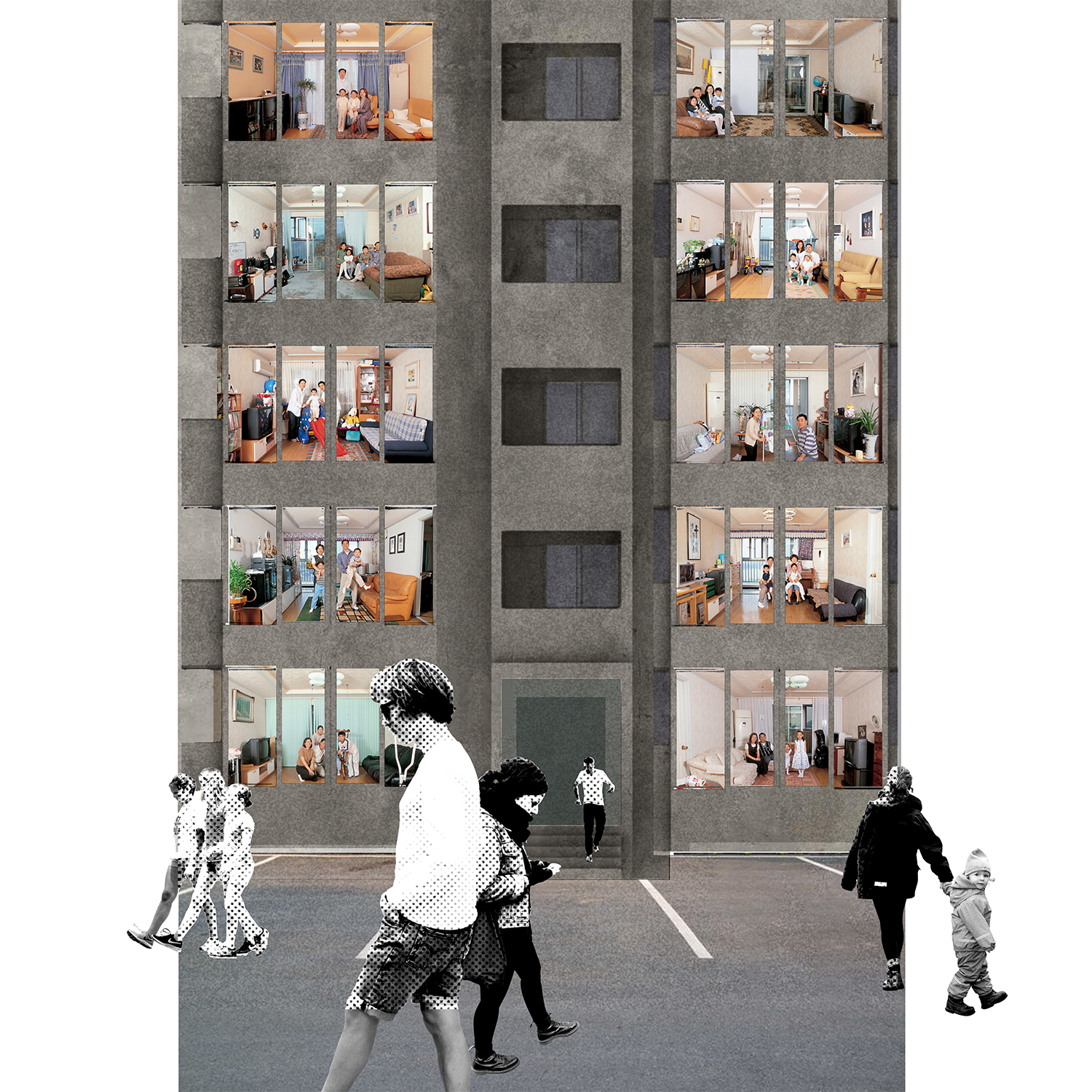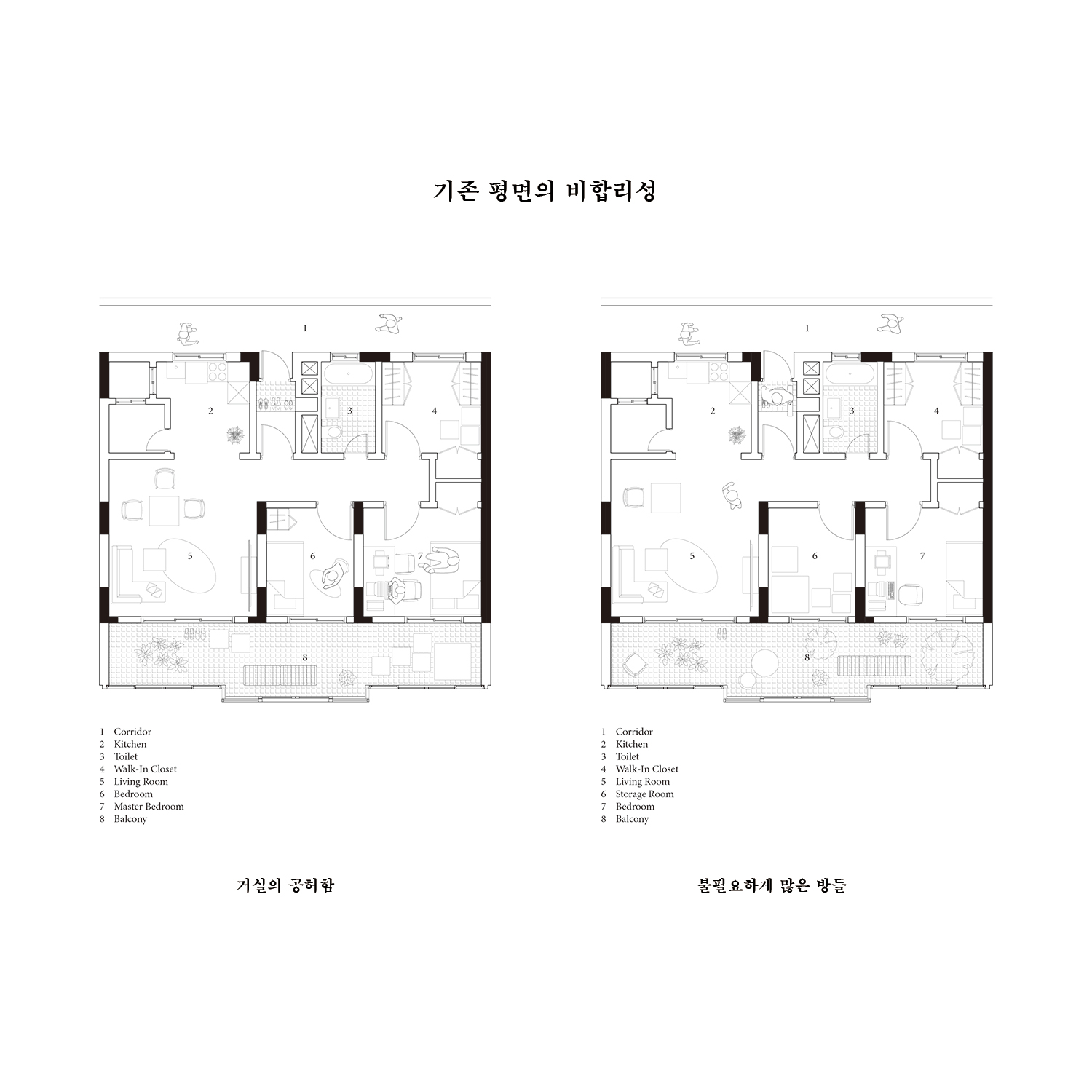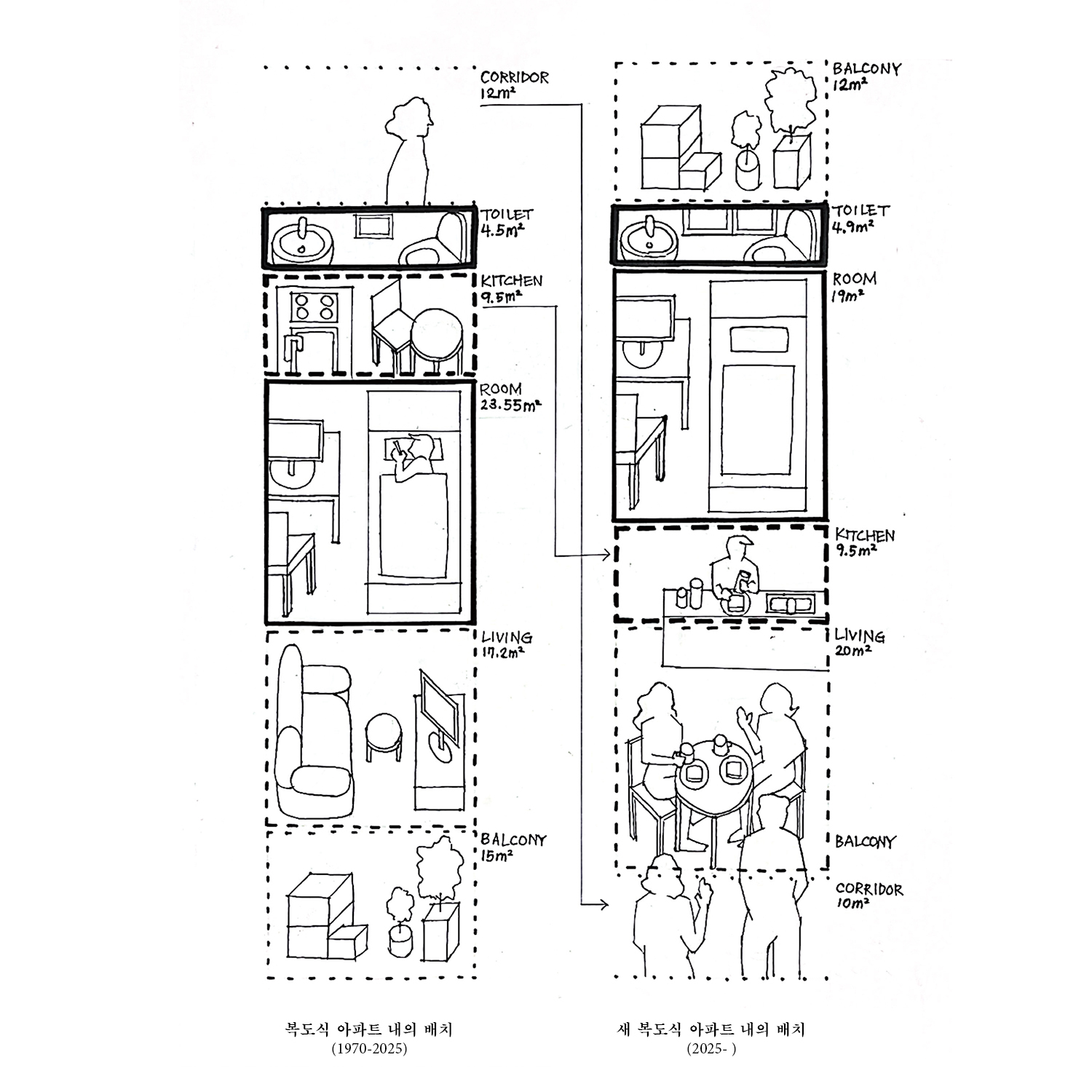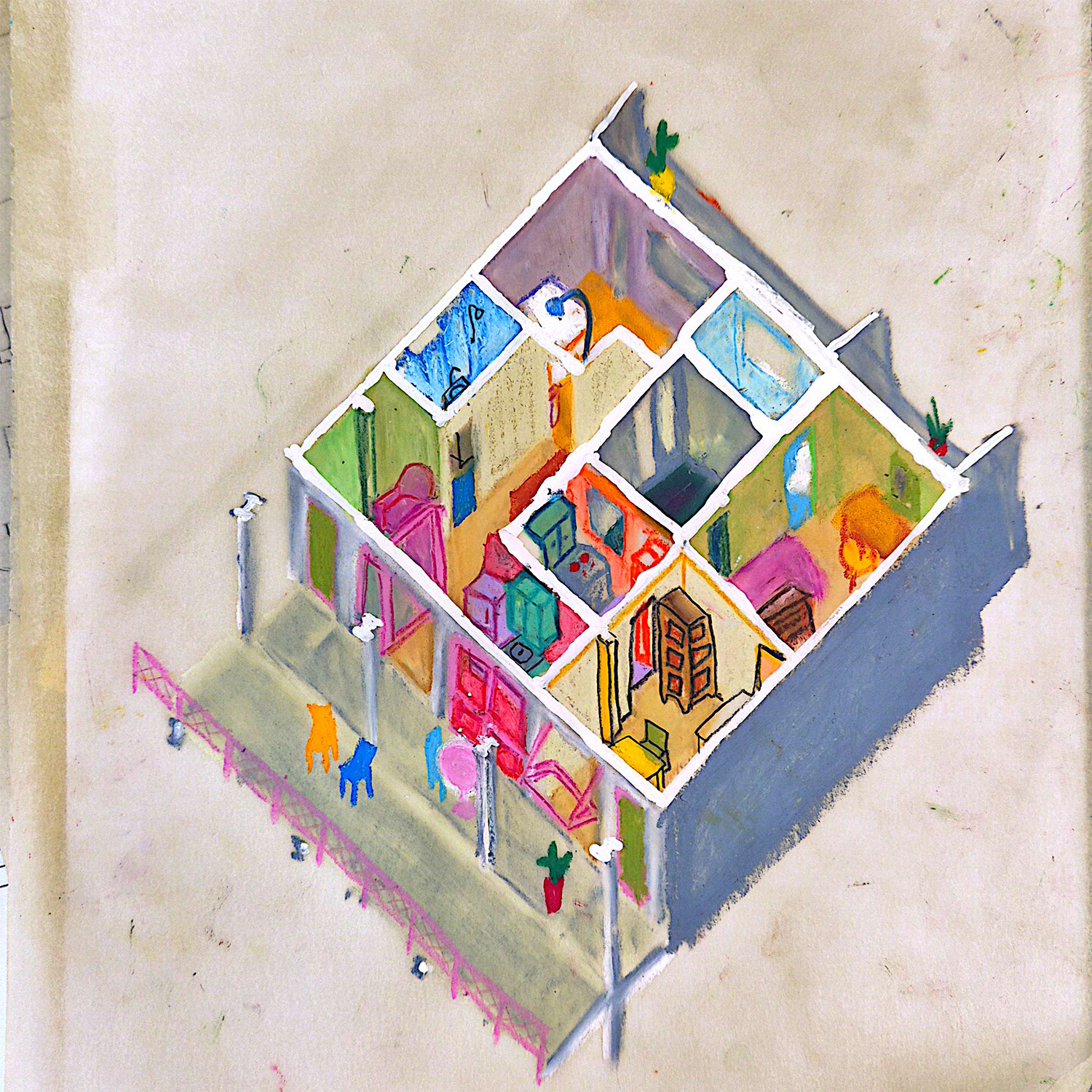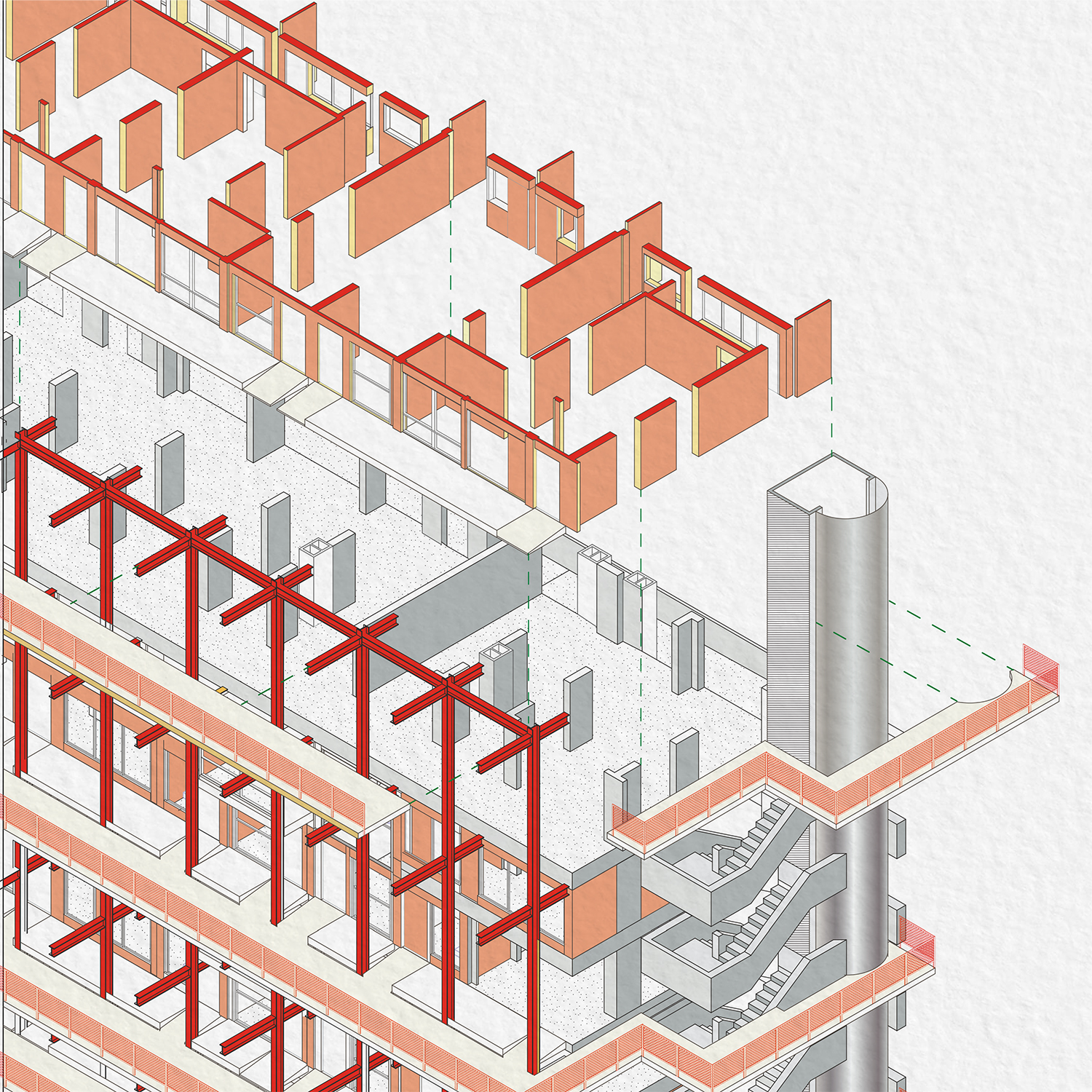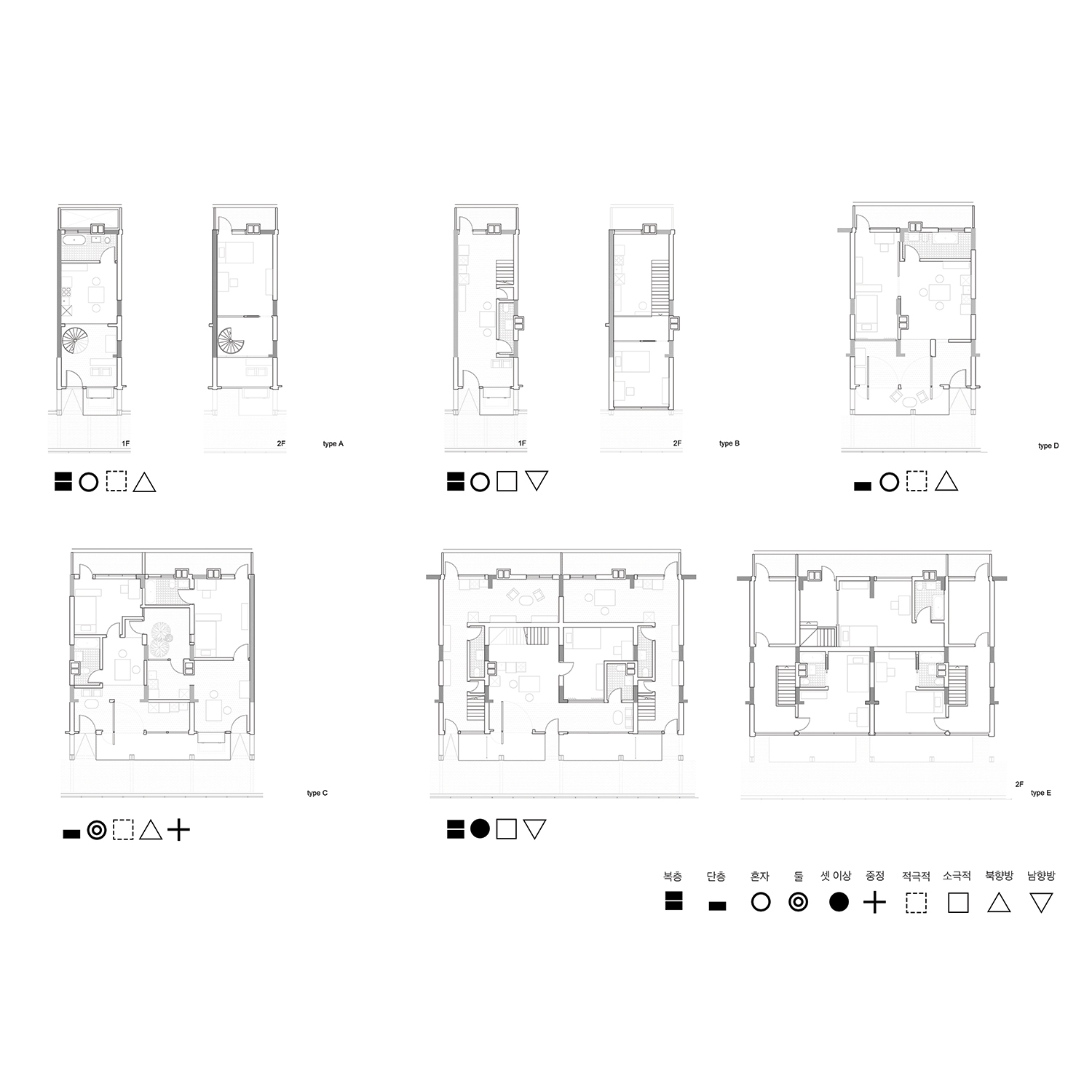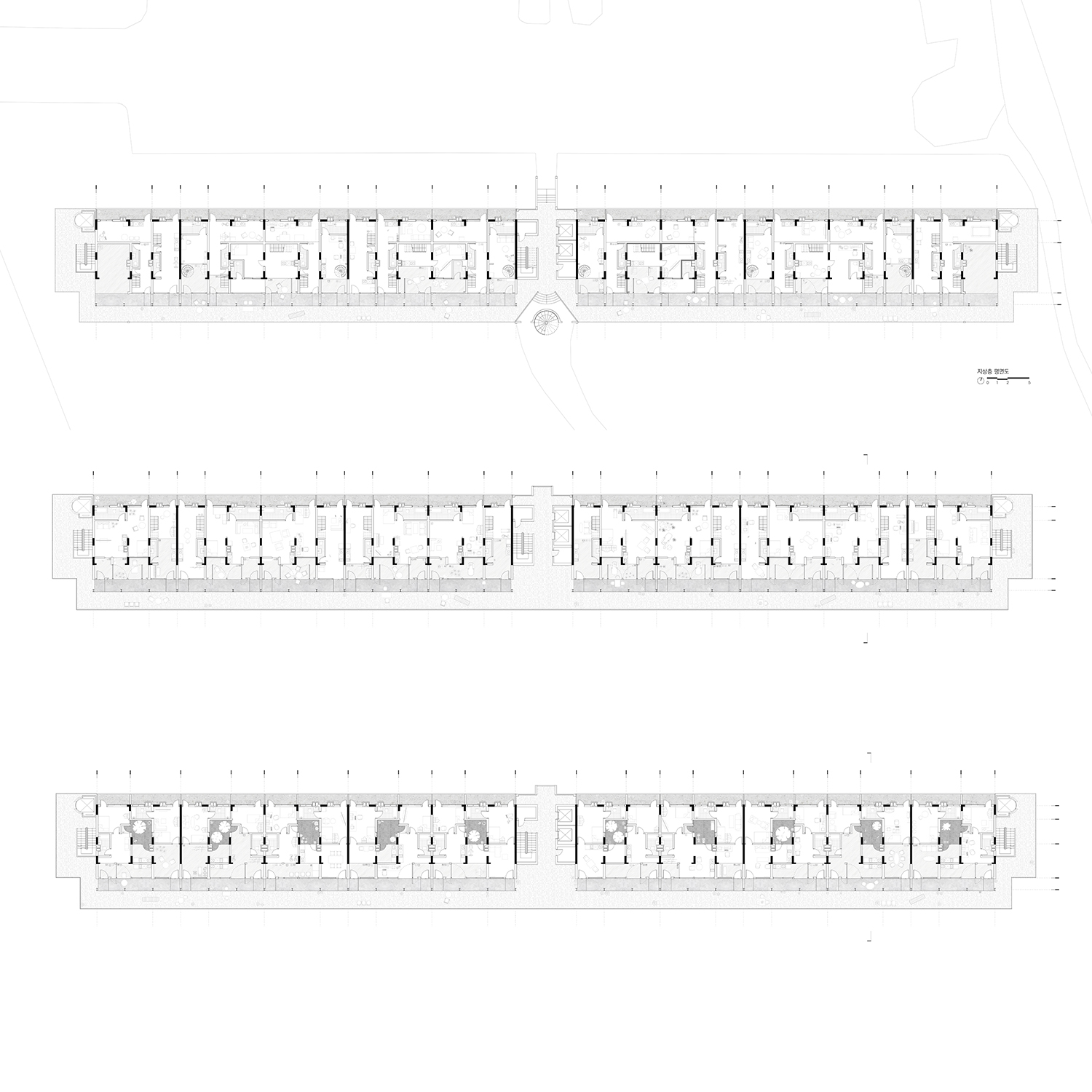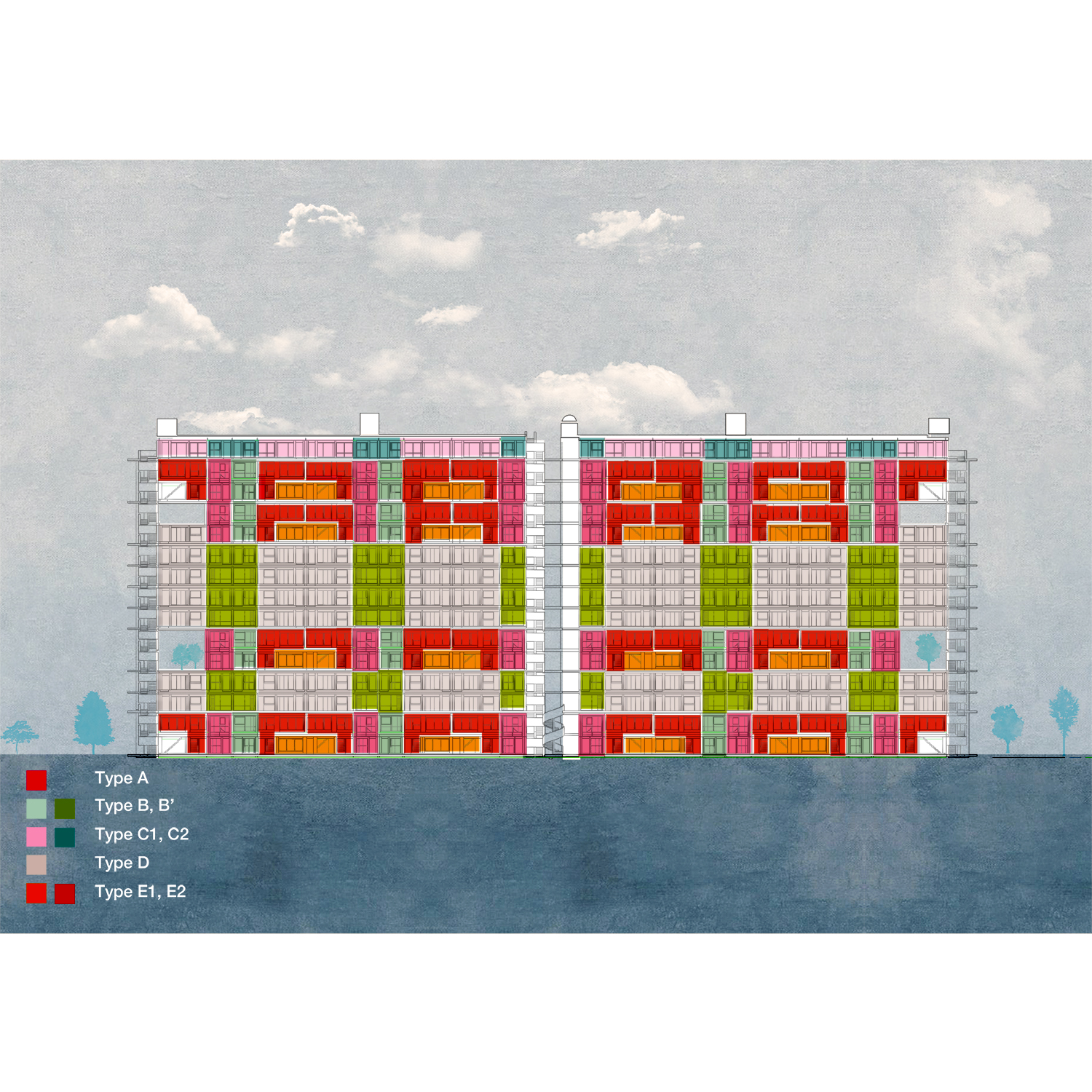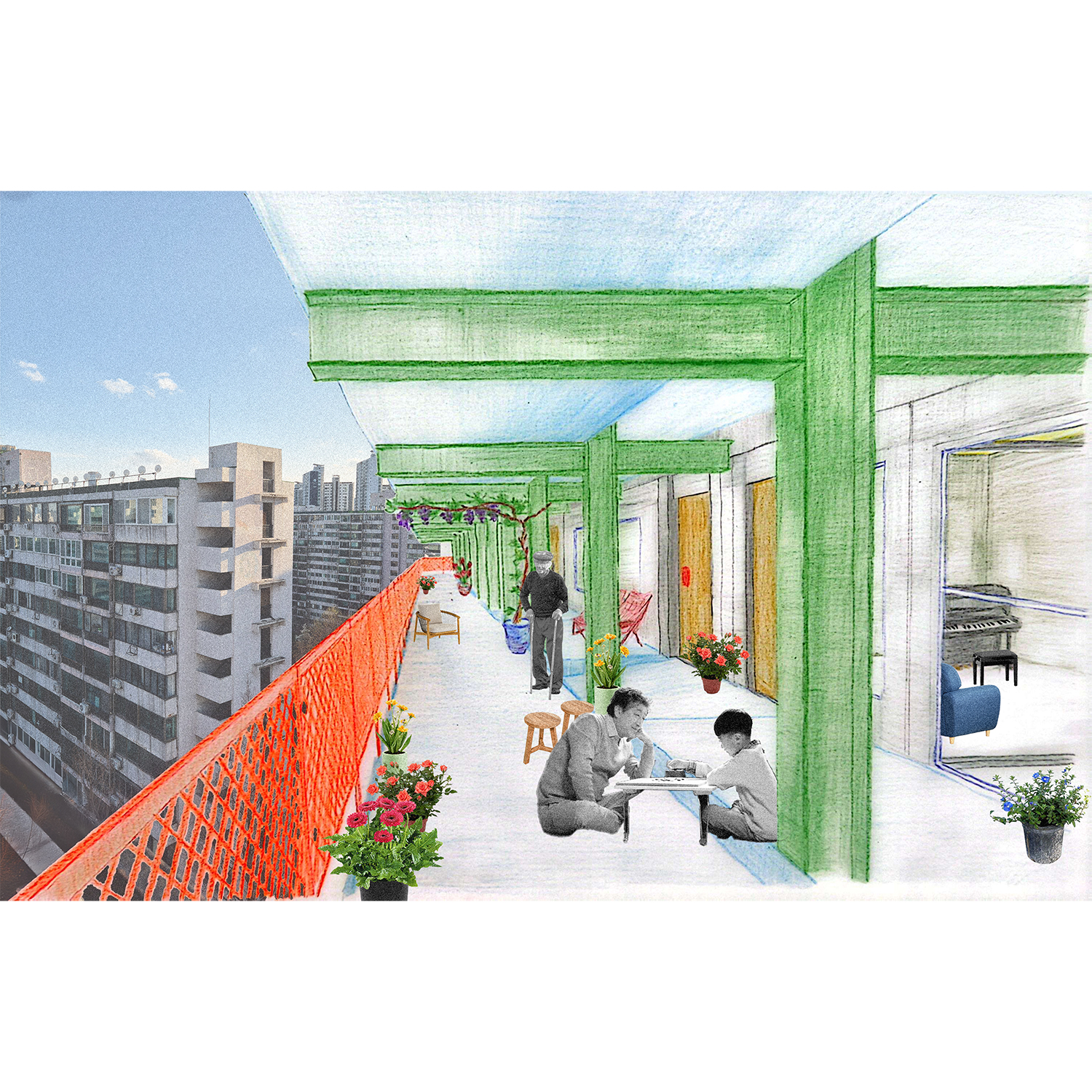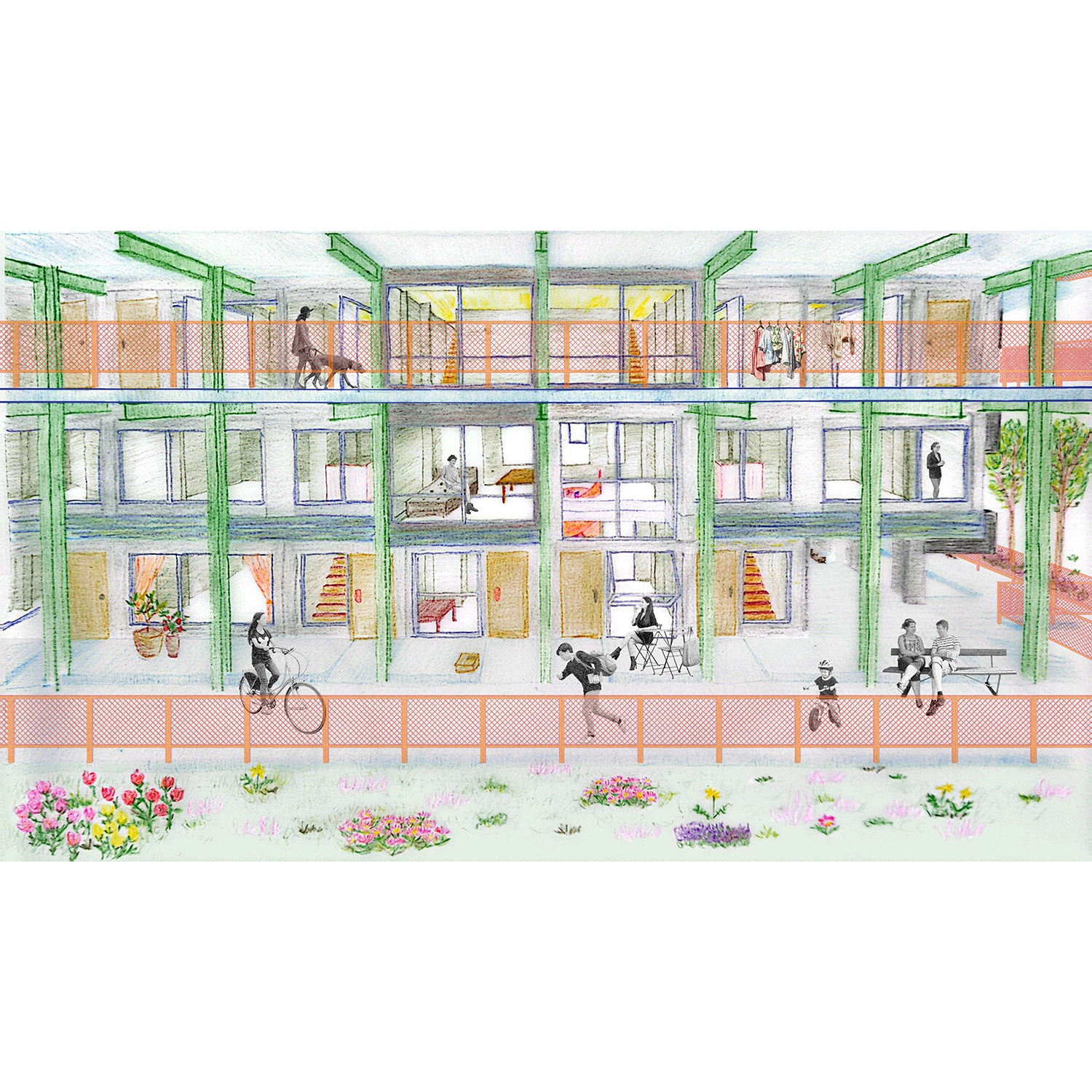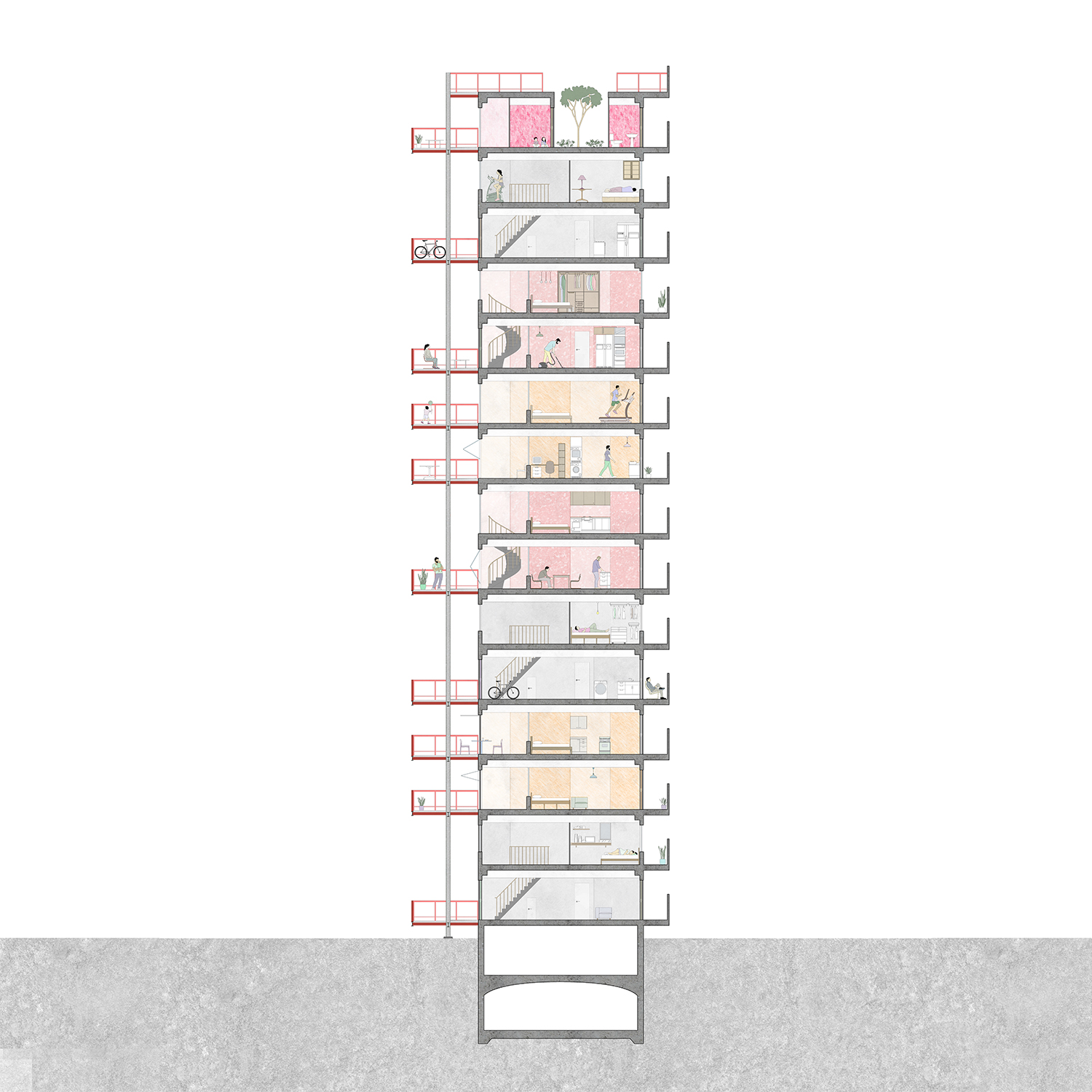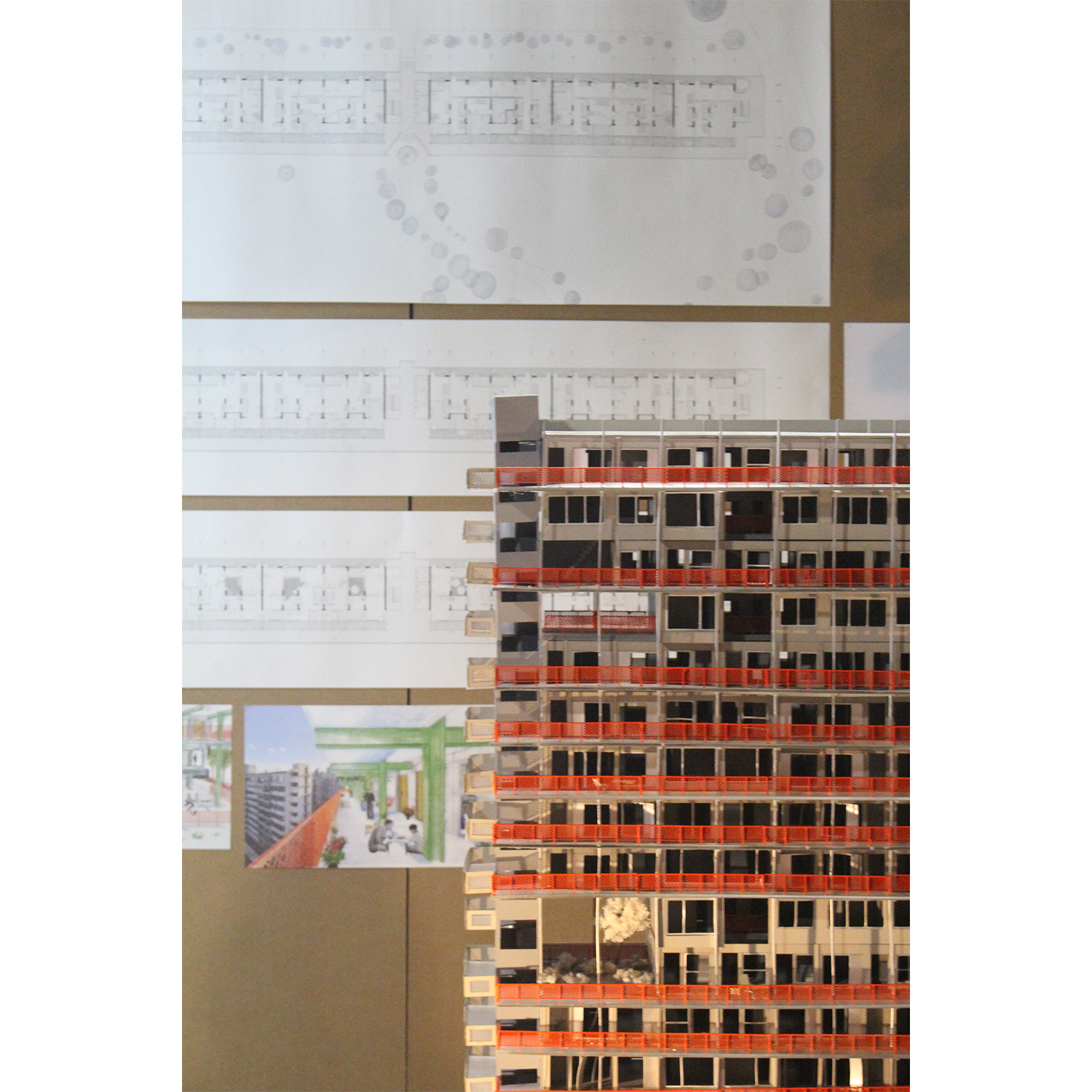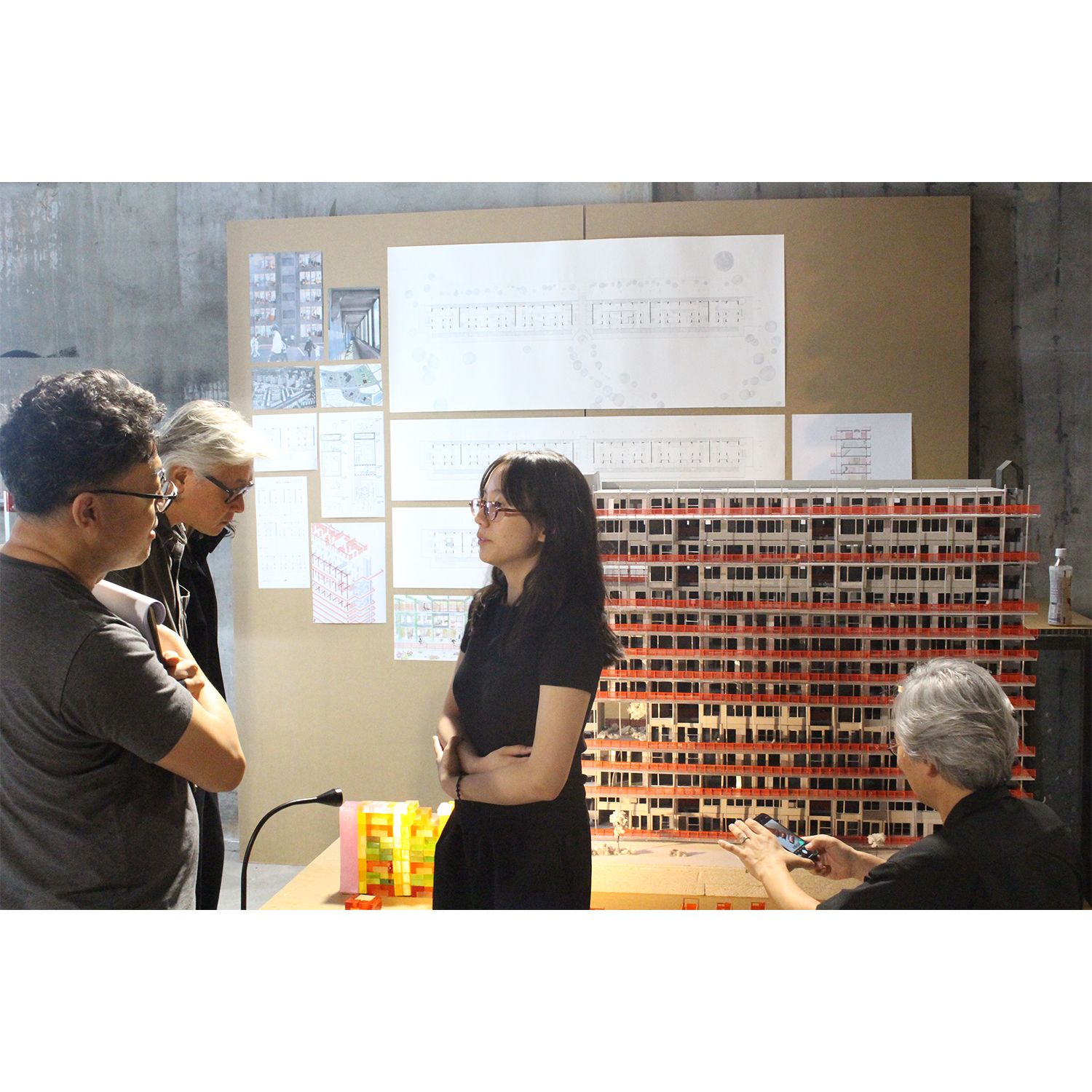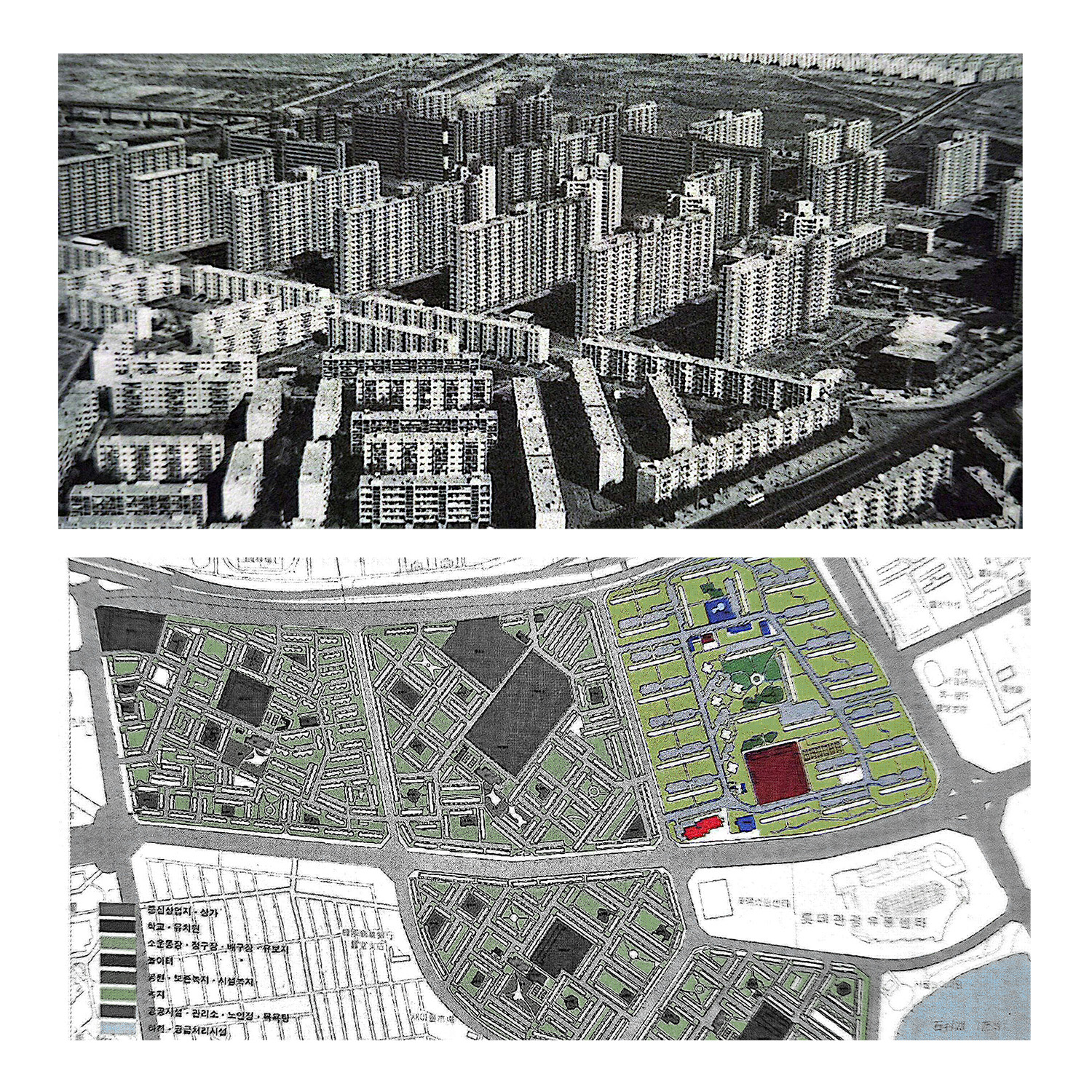이은진 _ 콘크리트유토피아
똑같은 외관과 형태의 반복. 답답하게 느껴지는 작은 창이 나열된, 가면을 쓴 콘크리트 구조물들은 숨길 필요도 없이 같은 얼굴이다. 마치 짜기라도 한 듯, 내부는 방 구조와 배치가 모두 같다. 심지어는 모든 가구가 같은 순서로 놓여 있다. 그곳에 사는 우리도 모두 같은 표정을 지어야 할 것 같다.
전쟁 이후 상경한 사람들로 붐볐던 옛 서울은 몇 년 새 판자촌으로 덮였고, 경제적으로 북한에 훨씬 밀리고 있었다. 살아남고자 발버둥 치고, 수직으로 쌓아 올리고, 높은 곳을 꿈꾸며, 우리는 아파트라는 하나의 이데올로기를 선택했다. 이제 서울의 어디를 가나 쉽게 찾을 수 있는 풍경인 아파트는, ‘주거’를 넘어서 ‘부의 상징’ 이자 ‘자본주의의 수단’ 이 되었다. 하지만 그 영광도 잠시, 가족이 해체하고 가구의 형태가 변화하면서 새로운 위기를 마주하고 있다.
“딸, 아들 구별 말고 둘만 낳아 잘 기르자.” 라는 50 년 전의 표어가 무색하게, 지금 우리는 인당 0.78 명의 최악의 출산율로 씨름하고 있다. 70 년도부터 표준화된 남향 거실 중심의 방 두세 개와 좁은 현관, 베란다, 비슷한 주방과 화장실 평면은, 정상가족 이데올로기에 최적화된 형태이다. 오늘날 가 (家) 족 앞에는 ‘1 인’,’ 캥거루’,’ 동성’,’ 딩크’, ' 노인 ' 이라는 다양한 접두사가 붙고, 표준평면은 더 이상 표준이 아니다. 지금은 위기를 기회로 삼아, 저 이데올로기에서 벗어날 시기가 아닐까. 가면을 벗은 서로 다른 얼굴의 집들이 마주하는, 쾌적한 거주 단지를 만들어 보면 어떨까.
남쪽에 복도를 붙이면서 북쪽의 사적인 공간들은 더욱 넓은 창을 낼 수 있다. 한편, OTT 서비스에 밀려나 기존의 용도를 상실한 거실에 사람들을 초대해 본다. 현관과 연결된 복도가 남쪽으로 넓고 투명하게 확장되어 사람들은 의자를 펼치고, 햇볕을 쬐기도 하며, 옆집 사람과 어떤 식물이 키우기 쉬운지 이야기하기도 한다. 조금씩 집의 모양이 달라서 옆집에는 은퇴하신 70 세 할아버지가 혼자 사시고, 그 옆집에는 30 대 직장인 친구 둘이 산다. 해가 떠 있는 시간과 진 시간의 집의 모습이 다르고, 매번 각자의 상황에 따라 변하겠지만, 모두 외로움은 덜 해 보인다.
집은 스스로를 표현하는 수단이기도 하다. 우리는 저마다 각기 다른 집을 꿈꾸며 같은 이데올로기 속에 살고 있다. 자유롭지만 외로운 집들이 수직으로 쌓여있는 이곳 아파트에서는 그들의 꿈과 염원이 돌탑처럼 쌓여있는 듯하다. 앞으로 남겨질 아파트에 이데올로기의 탈피를, 동시에 그곳에 사는 우리에게 외로움으로부터의 해방을.
Identical facades and repetitive forms. Rows of small, suffocating windows line the masked concrete buildings, wearing the same face without even trying to hide it. Inside, the layout is just as uniform—rooms arranged in identical sequences, furniture placed in exactly the same order. It feels as though those who live here must wear the same expression.
After the war, Seoul swelled with people moving from rural areas. Within a few years, makeshift slums overtook the city, and South Korea lagged far behind the North economically. In a desperate bid to survive, we built upward, stacking lives vertically. In doing so, we chose the apartment as a collective ideology. Today, apartments dominate the skyline of Seoul—symbols of wealth and tools of capitalism more than just places to live. But the glory didn’t last. As families broke down and household types diversified, a new kind of crisis emerged.
The slogan from fifty years ago—"Have two children, whether boys or girls, and raise them well"—now sounds hollow. South Korea grapples with a record-low fertility rate of 0.78. The standard apartment plan, developed in the 1970s—with a south-facing living room, two or three bedrooms, a narrow entrance, a balcony, a generic kitchen and bathroom—was built for the so-called “normal family.” But today's families come with prefixes: single-person, kangaroo (adult children living with parents), same-sex, DINK (dual income, no kids), elderly. The standardized plan no longer fits. Perhaps this crisis is our chance—to break free from the ideology, and imagine neighborhoods filled with homes that show their true, varied faces.
By moving the corridor to the south side, the private spaces in the north can open up with larger windows. At the same time, I reimagine the now-defunct living room—made irrelevant by OTT services—as a communal invitation. The entrance extends into a wide, transparent southern corridor, where people unfold chairs, bask in the sun, and chat with neighbors about which plants are easiest to grow. Each home is slightly different—one belongs to a 70-year-old retired man living alone, another to two friends in their 30s. The scene changes with the light of day, with personal routines, but somehow, no one seems lonely.
A house is a form of self-expression. We each dream of different homes, yet we live within the same framework. In these vertical towers filled with solitary freedom, our dreams and wishes pile up like stacks of stones. What remains is the possibility of escaping the ideology embedded in our apartments, and perhaps, finding relief from the loneliness of our lives.
